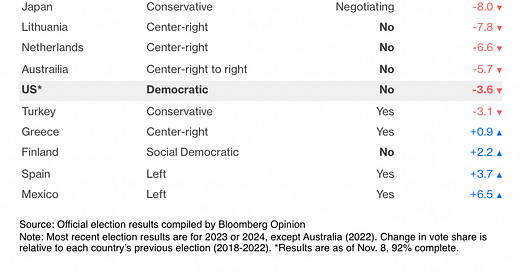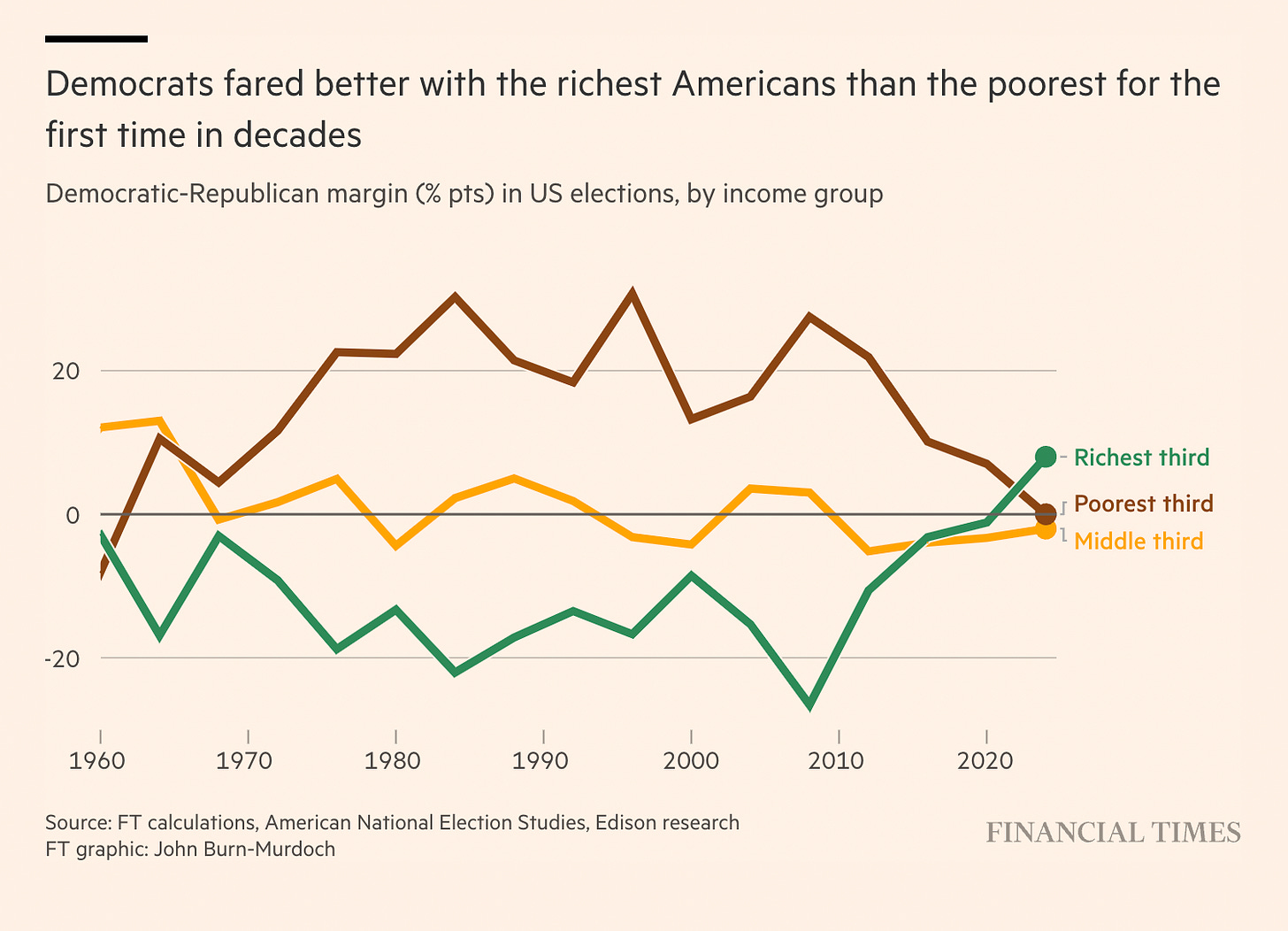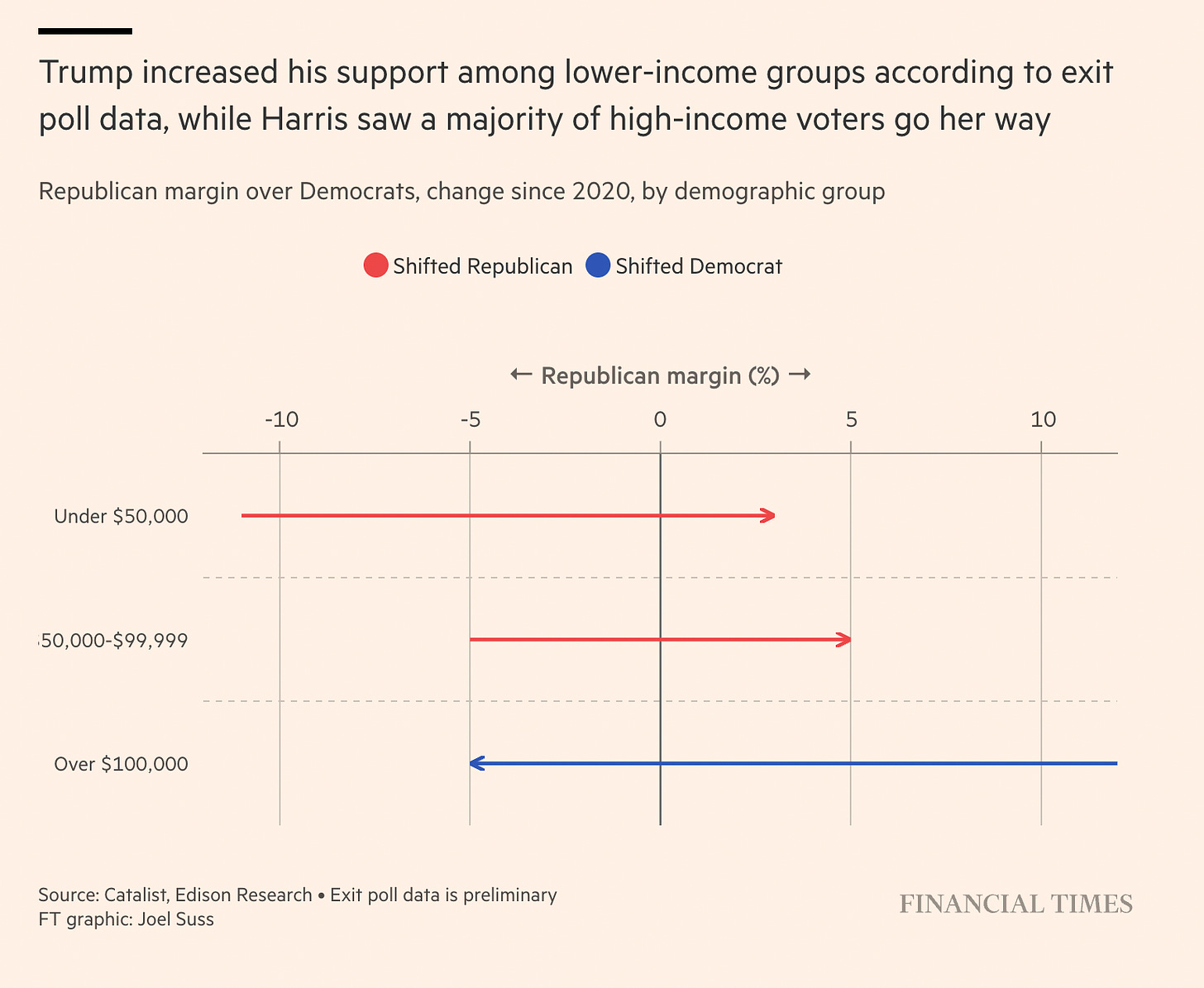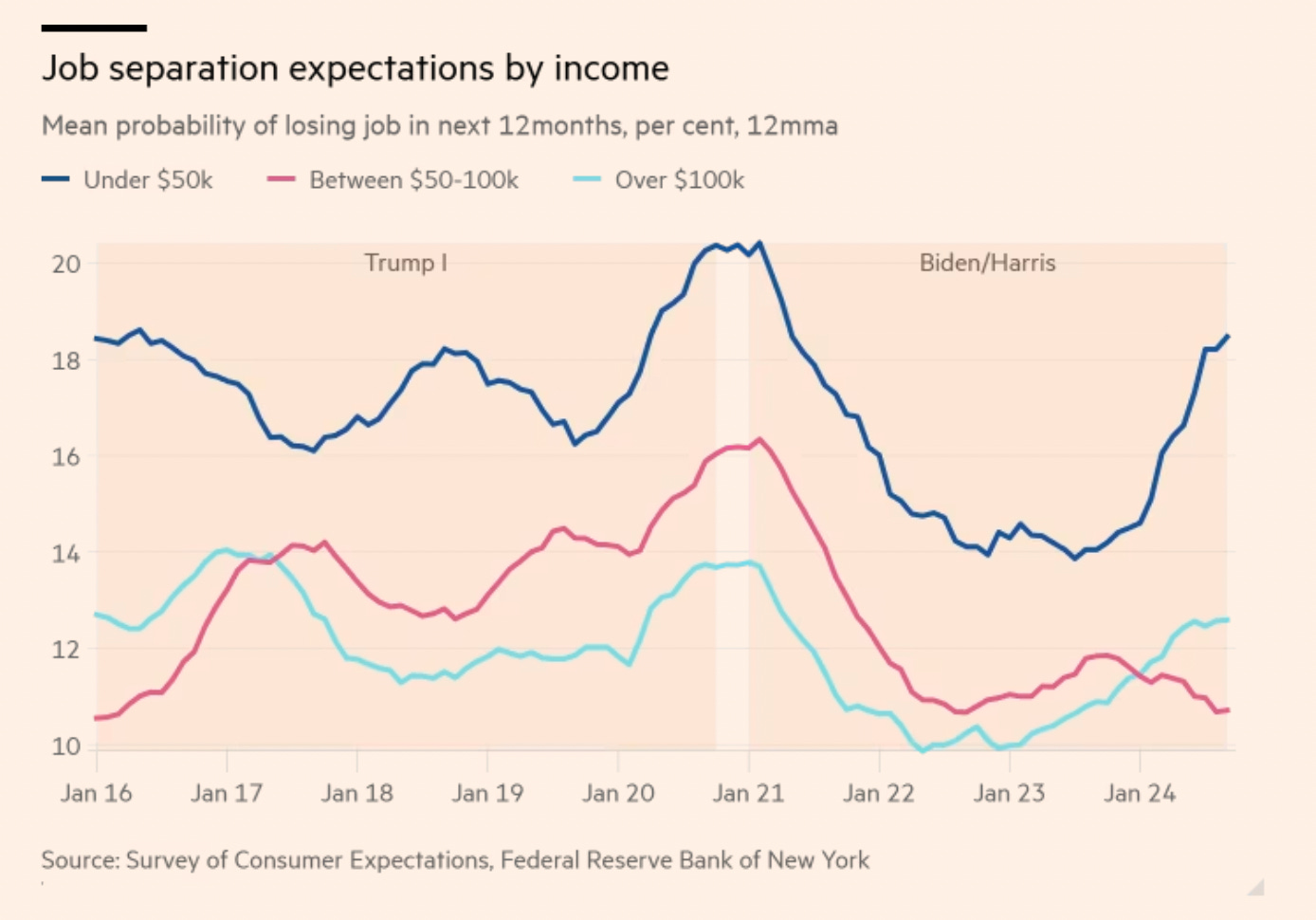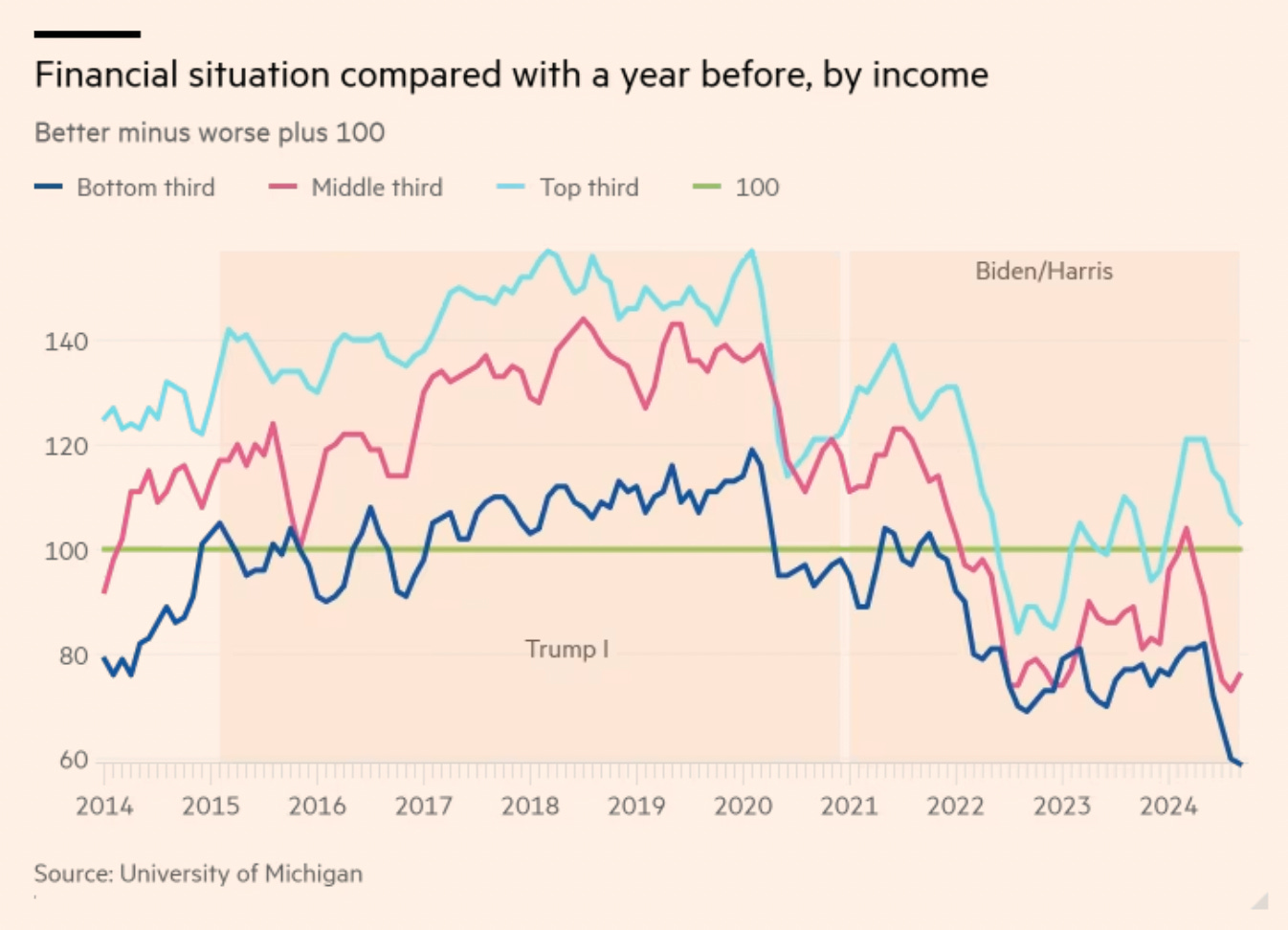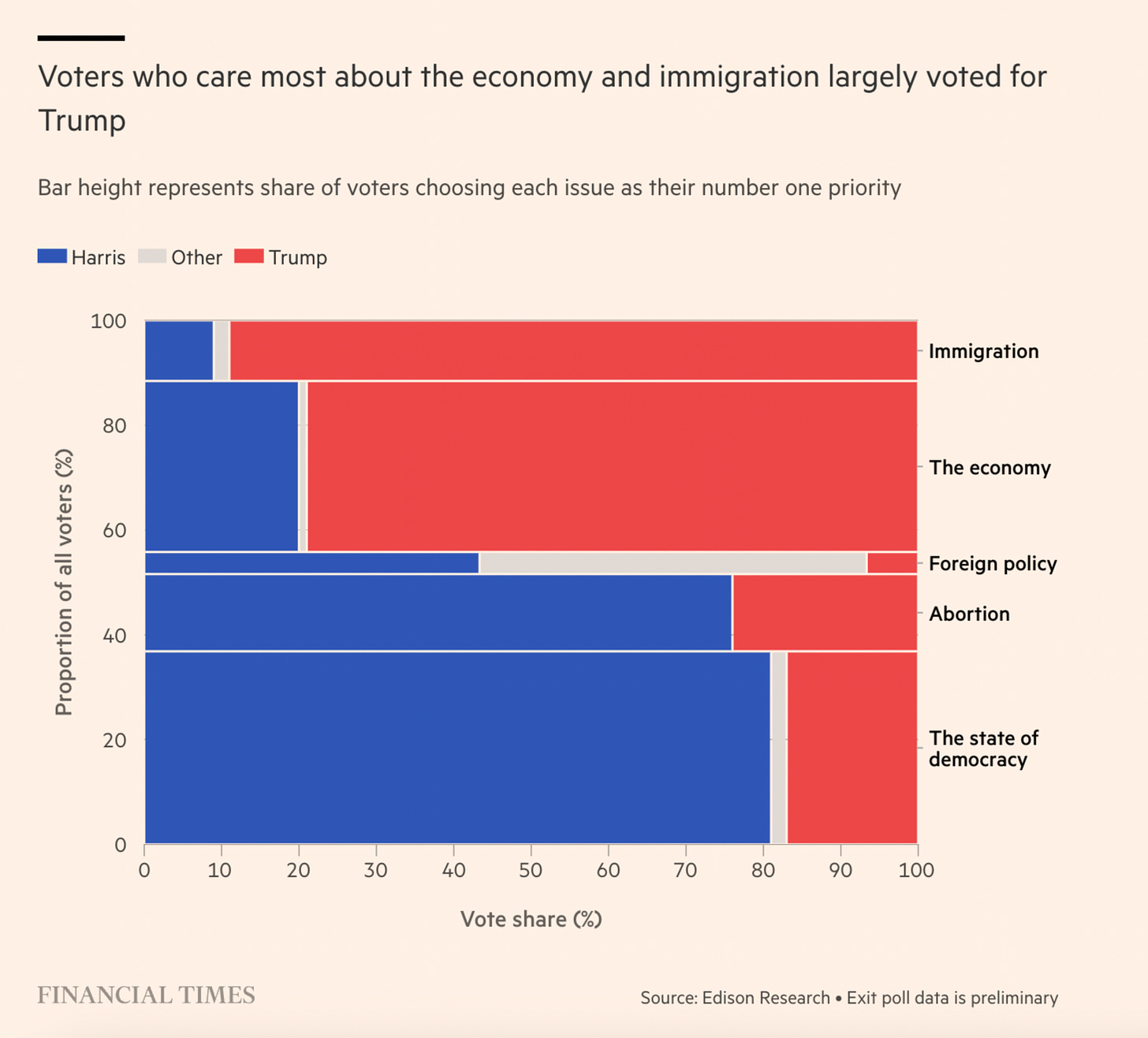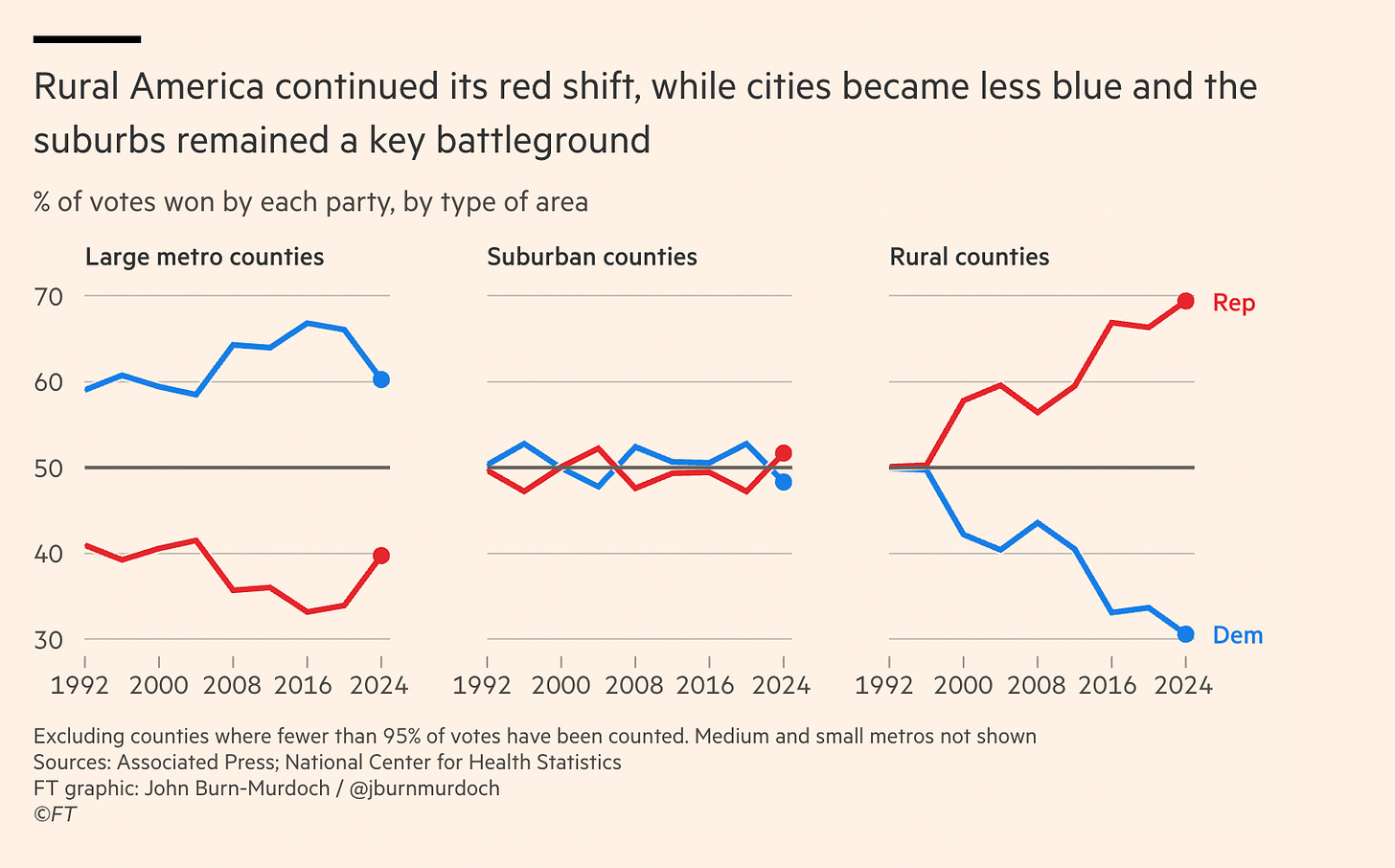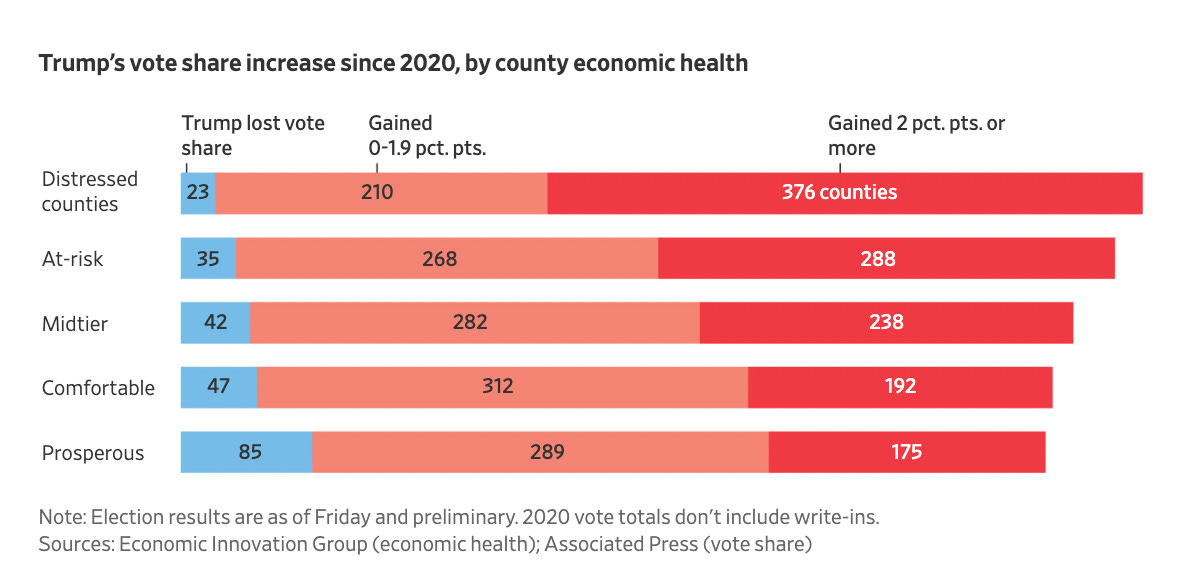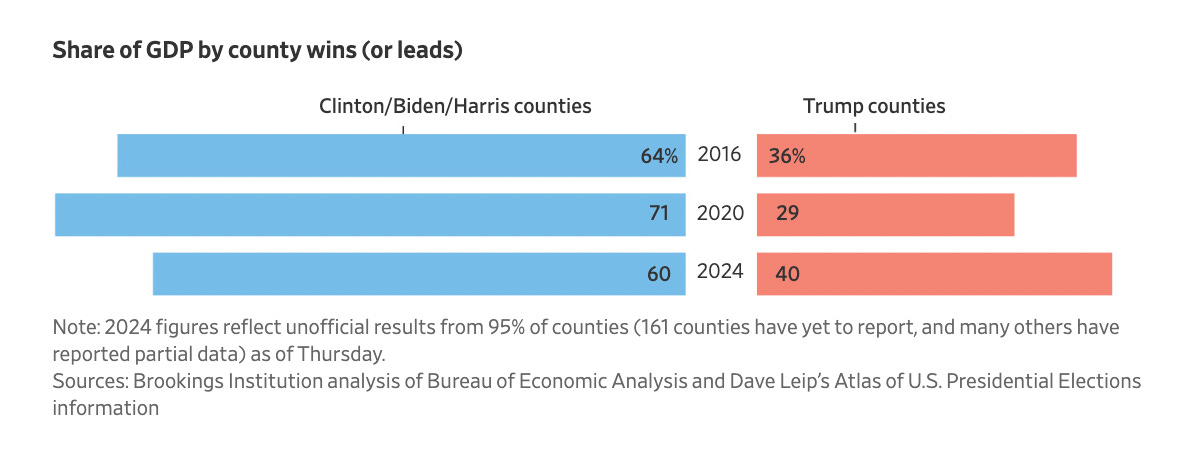Chartbook 332 The radicalization of Trump's GOP and the realignment of the American electorate.
Donald Trump’s victory in the US election last week is widely described as a shock. But in the current round of elections around the world, it is anything other than surprising. Incumbents everywhere have taken a beating from the after effects of COVID, notably the price shocks that unleashed an inflation scare. Voters around the world are anxious, frustrated and want a change.
The only incumbent party to score a truly resounding victory in recent times is Morena in Mexico. In the UK and France, incumbents have this year suffered drubbings four times worse than those suffered by Harris.
Source: Bloomberg
Judged by this comparative standard, the Democrats did relatively well not to lose even more badly. The truly unusual thing about the situation of the USA is the fact that Trump has had a second coming worthy of a Worldwide Wrestling soap opera. He was defeated as an incumbent in 2020 - an election which but for COVID he would surely have won - only to return as victor four years later.
But for all the illumination provided by the global comparison, Trump’s 2024 victory was not simply a conjunctural event, brought on by the aftermath of COVID and voter disillusionment. What the strange sequence of victory-defeat-victory highlights is the lack of real alternatives on the American right and the ongoing transformation of the Republican party as a vehicle for Trump and his brand of radical right-wing populism. What we have witnessed across three elections is the development and radicalization of the Trump brand.
The effect of this cumulative radicalization on the coloration of US politics is more clearly visible in the composition of the respective voter blocks than in overall party shares. As Trump has become increasingly disinhibited, and the Democrats opted for the seeming safety of centrists like Biden and then Harris, more affluent College-educated voters have migrated to the Democrats. For the first time in recent history in 2024 the Democrats gained a substantial majority amongst more affluent American voters. Gabe Winant, in a brilliant piece in Dissent, aptly characterized the style of the Harris campaign as aristocratic.
Source: FT
Whilst more affluent voters shifted to the Democrats, exit polls showed an almost 15 point swing towards Trump amongst voters earning less than $50k. There was an even larger shift to the Democrats amongst those earning over $100k.
As Tej Parikh points out in an Alphaville column, it is precisely Americans earning less than $50k per year who have recently begun to worry seriously about the threat of unemployment.
And according to the data of the Michigan consumer survey it is also those voters who are least sanguine about their financial circumstances.
The economy was not the only issue that mattered to voters. But amongst the 30 percent for whom it was the top issue, Trump outscored Harris by 80 to 20.
A simple reading of these data would be that this was an election that pitted the economy v. democracy with abortion and immigration serving as the supporting issues. It was the fine differences between these four camps across a polarized electorate that decided a close race. There seems to be a strong association between Trump voting and perceived economic stress. But that poses many further questions first and foremost, what are the factors that shape the experience of economic stress and the future outlook. One should not jump too quickly to conclusions about the meaning of these data or their implications for the evaluation of the Biden administration or the Harris campaign. I want to return to the meaning of the economic data in a future post.
In the mean time, the realignment in terms of income is closely associated with a consolidation of divides along lines of education, race and gender. For the first time in 2024 a majority of college-educated white voters opted for the Democrats over the Republicans.
Source: CNN
Education interacts with gender. White women without degrees have preferred Trump in all three elections by a margin of 27-28 percent. The abortion issue changed nothing about this preference. Amongst white women with degrees, on the other hand, the Democratic advantage has grown from only 7 percent in 2016 to 16 percent for Harris.
Class, education and economic fortunes map onto the spatial distribution of votes.
Going back to the early 1990s there was virtually nothing to choose between the parties in rural America. In 2024 there is a forty point gap in favor of the Republicans across rural counties. At the same time, across the last three decades, the advantage of the Democrats in cities has fluctuated between 20 and 30 percent.
In an intersting breakdown, the Wall Street Journal compared the movement of votes across counties with more and less white-collar and blue-collar jobs. Trump was far more likely to have lost vote share in 2024 relative to 2020 in counties with a high share of white-collar jobs. The picture was quite different in predominantly blue-collar counties.
Source: WSJ
Trump gained votes across much of the country, whether prosperous or distressed. But he was far more likely to make large gains in counties that are classified as distressed as opposed to those that are comfortable or prosperous.
The upshot is stark. For all their focus on inequality, social issues and discrimination, and despite the statistics showing a decline in inequality since 2020, the Democrats are failing to reach Americans who are relatively disadvantaged.
The net result is that if we map electorates on to the American economy, the Democrats predominate in counties producing the majority of US GDP. This holds true whether they win, as in 2020, or lose, as in 2016 and 2024.
The profound irony, of course, is that following this election the court of President Trump is now open to the richest men on the planet and to lobbyists of every stripe. Meanwhile, the policies he has loudly espoused are likely to hurt no one more than the lower-income Americans who have voted for him as never before. Along with the threat to civil liberties, this, surely, is the starkest summary of the crisis of American democracy in the current moment.
I love writing Chartbook. I am delighted that it goes out for free to tens of thousands of readers around the world. In an exciting new initiative we have launched a Chinese edition of Chartbook. What supports this activity are the generous donations of active subscribers. Click the button below to see the standard subscription rates. I keep them as low as substack allows, to ensure that supporting Chartbook costs no more than a single cup of Starbucks per month. If you can swing it, your contribution would be much appreciated.

